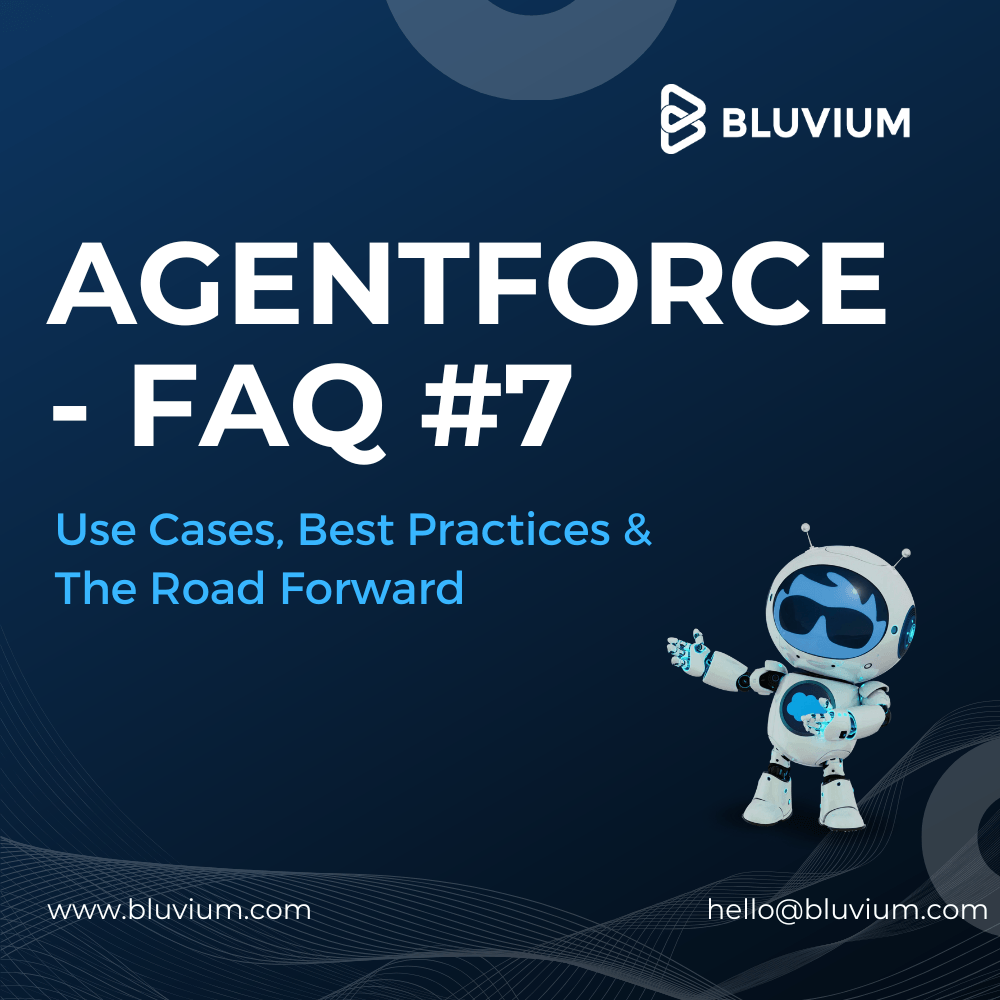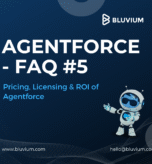
Agentforce: Use Cases, Best Practices & The Road Forward
As we conclude our Agentforce FAQ series, let’s bring together the two topics that matter most to enterprise leaders evaluating AI on the Salesforce platform: what Agentforce can do today, and where it’s headed next.
This edition dives into real-world use cases, proven deployment patterns, and what customers can expect as Agentforce evolves — all with a practical, enterprise-grade lens
1. Real-World Agentforce Use Cases Across the Enterprise
Agentforce is already driving measurable impact across functions. Here are the most common and highest-ROI use cases we see across Salesforce customers:
1.1 Customer Service & Support
- Automated case triage and routing
- Instant knowledge retrieval from Service Cloud data
- Intelligent suggested replies for agents
- Guided troubleshooting workflows
- Deflection of standard queries via digital channels
Impact: Faster resolution times, lower handle times, higher customer satisfaction.
1.2 Sales Acceleration & Productivity
- Prepped opportunity summaries and next-action suggestions
- Automated quote preparation steps in Salesforce CPQ
- Proposal drafting using CRM and product data
- Real-time objection handling or competitor insights
Impact: Sales teams spend less time searching and more time selling.
1.3 Marketing & Experience
- Automated content generation with brand controls
- Audience segmentation recommendations
- Rapid campaign setup and analysis
- Personalization at scale
Impact: Faster execution with consistent brand and compliance guardrails.
1.4 Internal Operations & IT
- Automated employee FAQs (policies, benefits, IT queries)
- Workflow orchestration within Salesforce
- Admin and DevOps support (metadata insights, config suggestions)
- Quality checks for data or configuration anomalies
Impact: Reduced operational overhead and faster internal response times.
2. Best Practices for Deploying Agentforce Successfully
Enterprise AI success is less about “big bang AI” and more about structured adoption. Here are the practices we’ve seen work consistently:
2.1 Start Small, Scale Fast
Pick 1–2 high-clarity use cases with measurable ROI — case deflection, sales summarization, quote guidance, etc.
Prove value quickly, then expand.
2.2 Begin with Trusted, High-Quality Data
Agentforce performs best when built on clean and well-structured Salesforce data.
Align data models, validation rules and knowledge bases early.
2.3 Use Guardrails & Governance from Day One
Leverage Salesforce tools for:
- Response constraints
- Allowed data boundaries
- Monitoring & auditability
- Governance approval flows
This ensures responses stay safe, predictable and compliant.
2.4 Monitor, Learn & Iterate Using Command Center
Salesforce’s Agentforce Command Center provides:
- Performance metrics
- Hallucination monitoring
- Response quality scoring
- Live usage statistics
Use this feedback loop to refine prompts, improve data sources, and scale usage.
2.5 Prioritize Use Cases with Clear, Repeatable ROI
Automated tasks that happen thousands of times a week (case replies, summarizations, next-best actions) deliver the fastest payback.
3. The Road Ahead: What’s Next for Agentforce
While Agentforce is already enabling real, enterprise-grade automation inside the Salesforce trust boundary, the roadmap signals even bigger leaps.
Here’s where Salesforce is investing next:
3.1 Deeper Native Automation Across Clouds
Expect more out-of-the-box agents for:
- CPQ & Revenue Cloud
- Field Service
- Commerce
- Healthcare & Financial Services
Prebuilt best-practice agents will reduce implementation times dramatically.
3.2 Faster, More Flexible Agent Orchestration
Upcoming releases will make multi-step and multi-agent collaboration easier — including conditional routing and advanced workflows with less custom Apex or Flow.
3.3 Enhanced Governance & Compliance Controls
Enterprises will see stronger capabilities around:
- Data boundaries and masking
- Region-specific compliance
- Access-level controls
- Enterprise auditability
These enhancements aim to support regulated industries adopting AI at scale.
3.4 More Bring-Your-Own-Model Choice (BYO-LLM)
Salesforce is expanding support for:
- Customer-selected external LLMs
- Hybrid model strategies (e.g., local + cloud)
- Private model deployments
All while keeping routing and governance within the Salesforce trust boundary.
3.5 Version 3 & Beyond: Built for Enterprise AI at Scale
Version 3 of Agentforce is shaping up to include:
- Richer agent memory
- Deeper tool use
- Faster runtime performance
- More autonomous actions with approvals
Guided heavily by feedback from enterprise customers and SI partners.
4. Wrapping Up the Agentforce FAQ Series
Over the past several weeks, we explored:
- What Agentforce is
- How it works
- Pricing & ROI
- Trust & privacy
- And now — use cases, best practices, and the future roadmap
Agentforce is no longer “emerging tech.”
It’s enterprise AI, operational today — with a roadmap built for scale, compliance and measurable business impact.
If your enterprise is evaluating or planning an Agentforce rollout, our team at Bluvium can help with:
✔ Use case discovery
✔ Implementation & governance
✔ CPQ + Agentforce integrations
✔ Pilot-to-scale programs
Let’s discuss how to make AI real for your business.





